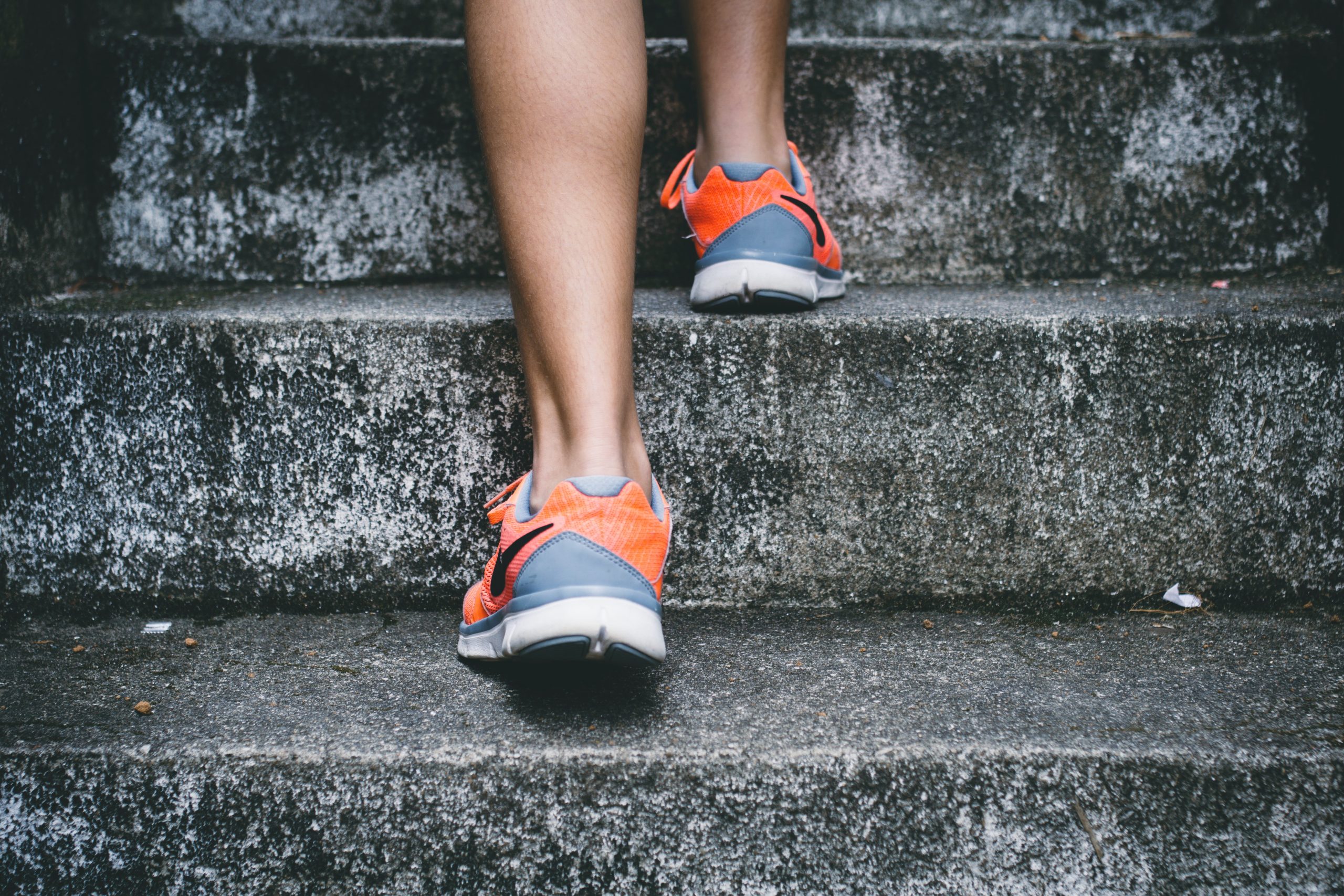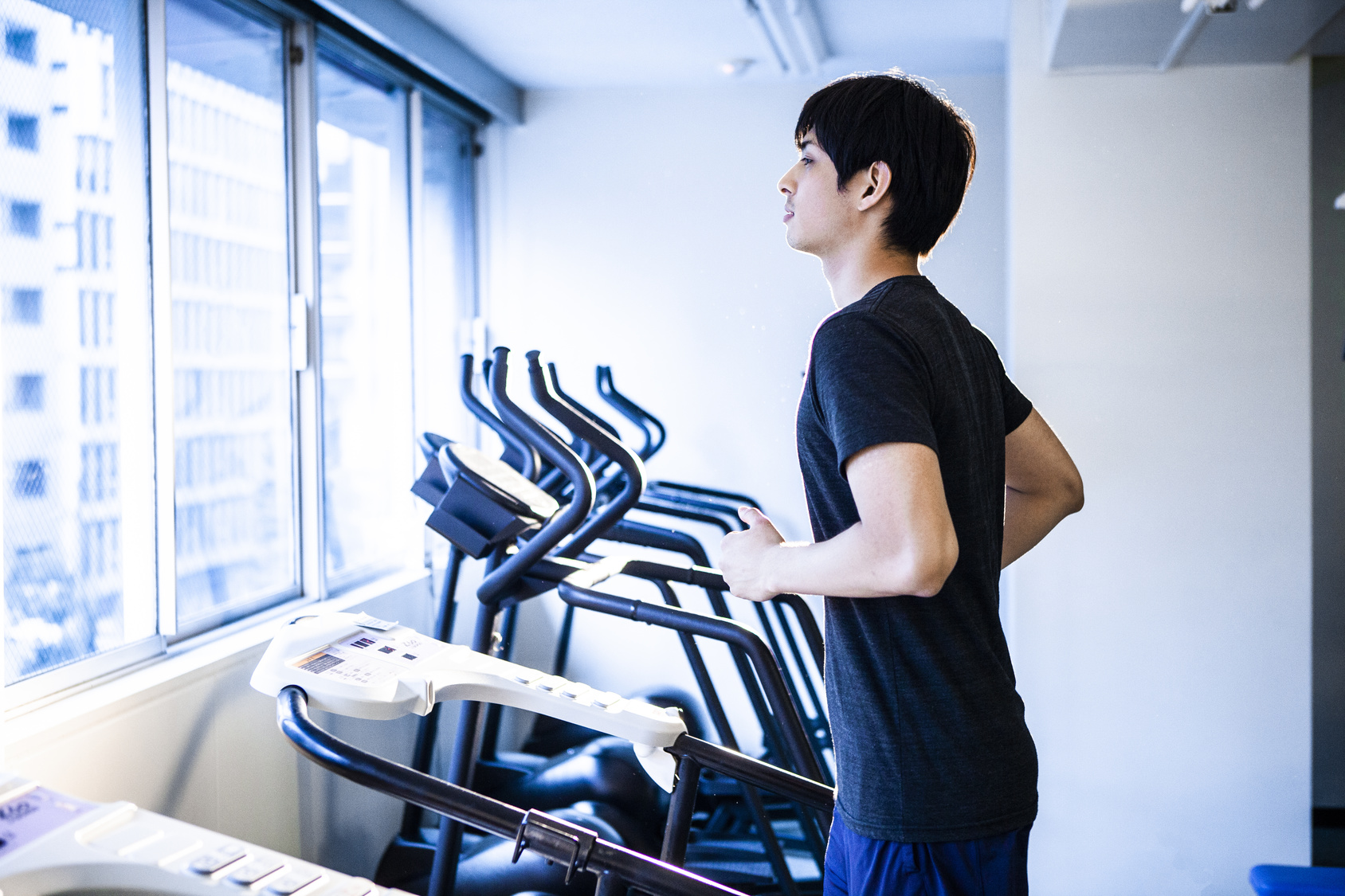Running outdoor is awesome. It will keep you sane, healthy and will get you into the best shape of your life.
It’s also awesome for the lungs and a great way to soak up some vitamin D.
However, my friend, let’s not ignore the shadows that can sometimes creep into our running paradise, especially if we find ourselves navigating through busy city streets and dodging traffic. It’s a sad reality that the number of accidents involving pedestrians, including us runners and motorized vehicles, is alarmingly high. But fear not! Today, I’m here to shed some light on how we can stay safe while pounding the pavement.
Now, some of these safety tips may seem like common sense, but trust me when I say that complacency can lead to disastrous consequences. Our well-being should always take precedence, and by following a few simple precautions, we can ensure that our beloved running routine remains invigorating and injury-free.
So, buckle up (or should I say lace up?) because we’re about to unveil the secrets to running safely in any setting.
The Stats On Traffic Dangers
Let’s talk numbers, my friend. Brace yourself for some eye-opening statistics that shed light on the harsh reality of running near traffic. According to the National Highway Traffic Safety Administration, a pedestrian tragically loses their life in a traffic accident approximately every 88 minutes.
Just let that sink in for a moment. That adds up to a staggering 16 lives lost each day and nearly 6,000 per year. It’s a haunting reminder that the dangers of running in close proximity to vehicles are all too real.
But wait, there’s more. On top of those heartbreaking fatalities, surveys reveal that approximately 140,000 pedestrians find themselves in hospitals each year due to nonfatal crash-related injuries. These numbers are not to be taken lightly. They paint a vivid picture of the risks we face as runners sharing the roads with traffic.
Now, I couldn’t find any specific data on the number of running-related fatalities, but let’s use our common sense here. Running near traffic is a popular activity, and it’s safe to assume that it contributes significantly to these alarming numbers.
But fear not, my fellow runner, her are the precautions you need to take charge of your safety when hitting the pavement near busy streets.
Cross Properly
Let’s talk about crossing the roads like a pro.
When it comes to this crucial aspect of road safety, there are a few key strategies you need to keep in mind to ensure you navigate the streets with finesse.
First things first, keep your eyes peeled for those designated pedestrian crossings. These magical zones can be found at road intersections, where drivers are on high alert for people on foot. It’s like entering a secret realm where your safety takes center stage. So, when possible, make a beeline for these holy grails of pedestrian crossings.
But what if you find yourself in a crosswalk drought? When a designated crosswalk is nowhere to be found, channel your inner Sherlock Holmes and embark on a quest for the safest and most well-lit spot on the road to cross. Look for areas that provide clear visibility and minimize any potential blind spots for drivers. Remember, it’s all about maximizing your chances of being seen and avoiding any close encounters with vehicles.
2. Drivers Can’t See You
Imagine yourself running along the bustling city streets, with cars whizzing by and the sounds of honking horns and blaring radios filling the air.
In this chaotic urban jungle, it’s crucial to adopt a mindset that assumes drivers simply can’t see you. It’s not that they don’t want to, but they’re often engrossed in their own worlds, lost in the rhythms of their favorite tunes, or engaged in animated conversations over the phone. Some may even have indulged a bit too much in liquid courage.
Studies have shown that driver distraction is a prevalent issue on the roads. One study conducted by the National Highway Traffic Safety Administration revealed that nearly 80% of all car accidents involved some form of driver inattention within three seconds prior to the incident. These distractions range from using electronic devices to interacting with passengers and daydreaming.
To navigate through this potential danger, it’s essential to take charge of your safety and maintain a safe distance between yourself and any vehicle. Aim for a three- to five-foot buffer zone, creating a protective bubble that allows you to react swiftly if a car suddenly veers too close for comfort. Think of it as establishing your personal running bubble, similar to how deep-sea divers rely on their trusty oxygen tanks to explore the depths while keeping dangerous pressures at bay.
But what about those instances when you need to cross the street? It’s not enough to assume that a driver will stop or even notice you. To enhance your safety, employ the power of non-verbal communication. Extend your arm out, signaling your intention to cross, as if you’re offering a friendly wave to catch someone’s attention. This simple gesture can be surprisingly effective, catching the peripheral vision of drivers and alerting them to your presence.
3. Look Both Ways
Picture this: you’re standing at the edge of a bustling street, filled with cars zooming by at lightning speed. It’s a dangerous dance, and the streets are controlled by stop signs?
They can be a runner’s worst nightmare. It’s like entering a labyrinth where you have to dodge potential hazards at every turn.
Now, I don’t mean to nag, but just like your mother used to drill into your head, it’s essential to look both ways before crossing the street. It may sound like a broken record, but it’s a timeless piece of advice that holds true to this day. Think of it as a ritual, a moment where you pause and take in your surroundings, making sure that you have a clear path to safety.
4. Make Eye contact
There’s an extra step you can take to ensure your safety when facing those four-wheeled monsters. It’s all about making eye contact with the driver. Lock eyes with them and make sure they acknowledge your right-of-way before you step a foot in front of their moving vehicle. This simple act can prevent any confusion or miscommunication, giving you the confidence to move through the intersection with peace of mind.
Now, let’s say you and a car are both approaching an intersection simultaneously. Stop right there, my friend! Take a moment to let the car go first. Trust me, you’re no Flash, and unless the driver is moving at a snail’s pace, you’ll never win that race.
When you find yourself facing a stop sign or waiting at a traffic light, it’s all about waiting for the driver to signal you. It’s like a dance between two individuals who respect and acknowledge each other’s presence. Let the driver give you the nod, and then respond with your own civil way of acknowledging them. It’s like a silent thank-you, a small gesture that can foster a sense of community and make drivers more likely to extend the same courtesy to the next runner or pedestrian they encounter.
5. Pay Attention to Intersections
Don’t assume you’re out of harm’s way just because the walk-in sign is “On.”
A driver might take a swift turn into the crosswalk or may even run the light. That happens all the time. Some drivers do it on purpose, but most are too distracted even to notice.
6. Use The Sidewalk
You are prone to accidents if you’re running on the road near cars, trucks, and other vehicles. Therefore, make sure to run on the sidewalk if one is available.
That said, there are a few exceptions to this rule. These include:
- When running on a quiet and safe residential road
- During an organized race
- Roads on which traffic is almost nonexistent
- Roads without sidewalks
- Frozen sidewalks that may be hazardous and/or slippery.
- Whenever your gut tells you otherwise.
7. Face Traffic
In case there is no sidewalk, then run facing oncoming traffic better see oncoming cars, and the drivers will see you more clearly, too.
This can help you prevent traffic-related accidents, especially if you run at night or in the early morning.
The only exception to this rule is when you’re about to reach a blind corner or bend where visibility is poor. Keep in mind that if you cannot see around it, neither is the driver coming the other way.
When it’s the case, cross to the right side of the road, stay as far to the right as possible, keep your music off, and pay attention to what’s happening around you.
Do not, under any circumstance, run down the middle of the road.

8. Don’t Try to Outpace a Vehicle
Trying to outrun a vehicle is like trying to beat the wind at its own game. It’s a futile endeavor, my friend. Even if you possess the speed of an elite sprinter like Usain Bolt, those motored machines are built for one thing: speed. Bolt himself, the fastest man alive, wouldn’t stand a chance against a car cruising at a mere 30 to 40 mph, which happens to be the typical speed limit in most cities.
Let’s face it: when a vehicle and a human collide, it’s not a fair fight. There’s no mystery as to who comes out worse for wear in that scenario. It’s a harsh reality, but one that we must acknowledge. So, if you find yourself approaching an intersection alongside a motorized vehicle, do yourself a favor and stop. Let that vehicle take the lead. It’s a simple act of self-preservation, ensuring that you stay out of harm’s way and avoid becoming another statistic in the traffic accident data.
When in doubt, err on the side of caution. If you sense any uncertainty or hesitation, it’s better to step aside, pause, and wait. Trust your instincts because they have a way of guiding us toward safety.
9. Be Shiny
Let’s shed some light on another important aspect of running safety: visibility. Picture this: you’re out for a run, and the sun begins its descent, casting a dim light on the world around you. In these low-light conditions, it’s crucial to make yourself seen.
Be shiny, my friend. Wear high-visibility, brightly colored clothing that screams,
“Hey, I’m here!” Neon colors are a fantastic choice, but if you don’t have anything neon in your wardrobe, don’t fret. Opt for light-colored clothing or even a lightweight reflective vest. These simple additions to your running attire can be real-life savers, catching the attention of drivers and ensuring that you’re visible from afar.
And if you’re really serious about being safe, consider strapping on a headlamp or carrying a handheld light. Yes, I know they might not be the most fashionable accessories, but safety always trumps fashion.
These lights not only illuminate your path, allowing you to see where you’re going, but they also serve as beacons, signaling your presence to cars, pedestrians, and even creatures lurking in the shadows.
10. Have Awareness
The number one rule to keep yourself safe out there is to pay attention. Imagine this: you’re lost in your thoughts, with those trusty earbuds firmly planted in your ears, and suddenly, BAM! You step right into a bustling intersection without even realizing it. It’s a recipe for disaster, my friend. So, let’s make a pact to keep the volume on those earbuds at a reasonable level, allowing us to stay connected to our surroundings.
Listen up, because the sounds around you are like little alarm bells ringing in the distance. Whether it’s the blaring honk of a horn, the revving engine of an approaching vehicle, or even the bark of an enthusiastic dog, these noises are your red flags, your auditory reminders to stay alert. Even if you’re running in a peaceful, secluded area where drivers seem like mythical creatures, keep an eye out for your fellow runners, cyclists, and walkers who share the same path. Remember, we’re all in this together, and a little awareness can go a long way.
And let’s not forget about our early bird and night owl friends, the furry companions that may cross our paths during our runs. Stay on guard and be ready to encounter dogs and other animals. If you’re running through bushy or dark areas, consider using a repellent to ward off any unwanted scratches. Safety comes first, after all.
11. Be careful on Blind Spots
Now, let’s tackle blind curves and hills, those tricky spots where visibility plays hide-and-seek with us. Picture this: you’re on the road with hills and turns that make it challenging to spot oncoming cars while running against traffic. It’s like a real-life game of “guess the car.” But fear not, my friend, for I have a solution.
If you’re about to conquer a blind curve and there’s no barrier between you and the road, consider crossing to the other side where you can actually see the traffic as it navigates the curve. It’s a smart move, allowing you to stay one step ahead of any surprises.
The same goes for blind hills, where you can’t catch a glimpse of a car about to come over the crest. Switch to the other side of the road and keep a vigilant eye on cars approaching from behind. Just remember to switch back to the correct side of the road after passing these treacherous zones.
12. Have Some Manners
When you find yourself ready to overtake a fellow runner or a cyclist (if you happen to be that speedy), it’s time to unleash your inner manners.
Before you make your move, give them a heads up, make some noise, and let them know which side you’re planning to pass them on. It’s all about showing respect and empathy because nobody likes to be caught off guard while in the midst of their exercise regimen. Treat others as you would like to be treated, and together, we can create a harmonious running environment.
13. Don’t Run with Earphones
Now, let’s address the age-old debate about running with earphones. Trust me, I understand the allure of getting into the “zone” with your favorite tunes playing in your ears. However, it’s essential to strike a balance between the euphoria of music and the necessity of situational awareness. Imagine this: you’re running through the serene beauty of nature, the wind whispering through the trees, and suddenly, potential danger lurks nearby, masked by the pumping sound of your favorite beat. It’s not a pleasant scenario, is it?
So, here’s my personal strategy. I enjoy running with earphones too, but I make sure to dial down the volume a notch (it’s also a good practice for your precious ear health). And whenever I sense any potential danger or find myself in a secluded area, I switch to using only one earpiece and alternate ears throughout my run. This way, I can still enjoy my music while staying connected to my surroundings. The idea is to avoid the complete sensory deprivation caused by blasting music in both ears, which not only dulls your senses but also slows down your reaction time, leaving you vulnerable to unexpected incidents.
14. Try Open-Ear Headphones
Now, if you’re adamant about having your music accompany you on your run, I’ve got a nifty suggestion for you—open-ear headphones. These technological wonders utilize bone conduction,
The beauty of these headphones lies in their ability to provide a seamless blend of auditory pleasure and situational awareness. You get to enjoy your music while staying tuned in to the sounds around you. It’s the best of both worlds, my friend.
Here’s a little nugget of wisdom for you: avoid wearing traditional headphones that isolate you from the outside world when running on roads. Cutting off your sense of hearing puts you at a significant disadvantage.
You won’t be able to hear the approach of oncoming cars, the urgent shouts of passing cyclists, the barks of enthusiastic dogs, or any other potential threats that might cross your path. But if you absolutely must have your music or other distractions, keep the volume at a whisper or, even better, run with one earbud out. That way, you can still catch the rhythm of your favorite tunes while staying attuned to the world around you, ensuring your safety and the safety of others.
15. Avoid Dark Time Runs
Let’s shed some light on the importance of avoiding those dark time runs.
You see, when the sun goes down, and darkness blankets the world, the risks for runners skyrocket. Surveys have shown that a staggering 70 percent of pedestrian fatalities occur during nighttime, with a significant chunk, 32 percent to be exact, happening between the hours of 8 p.m. and 11:59 p.m. It’s a chilling statistic but one that serves as a powerful reminder to prioritize safety when it comes to running in the dark.
Now, if you find yourself absolutely compelled to embark on a nighttime running adventure, whether it’s an early morning jaunt or a late evening sprint, let me give you a piece of advice that could be a game-changer—dress to be seen.
Don’t blend into the darkness like a ninja on a covert mission. Instead, deck yourself out in high-visibility, brightly-colored workout gear that practically screams, “I’m here!”
Think vibrant sashes, eye-catching armbands, and jackets that make you shine like a beacon in the night. Oh, and let’s not forget about your trusty running shoes. They, too, should sport a burst of color to ensure you stand out from the shadows.
But what about those gloomy rainy days or snowy escapades? Fear not, my friend. In those tricky weather conditions, as well as during the enchanting moments of dawn, dusk, and complete darkness, reflective clothing becomes your secret weapon.
Yes, it’s time to embrace the power of reflectivity. Adorn yourself in garments that light up like a fireworks display when hit by headlights. And to add an extra layer of visibility, clip a flashing light to your clothing. It’s like having your very own disco party on the go while ensuring that drivers can’t help but notice you.
Now, I understand that not everyone has a wardrobe filled with reflective clothing. But fear not; there are still ways to enhance your visibility. Even in broad daylight, make it a habit to carry something light-colored, fluorescent, or brilliantly bright. A lightstick or a trusty headlamp can work wonders in making you stand out like a superstar. Remember, being seen is the key to staying safe.
16. Carry Identification
Let’s shift gears for a moment and talk about a vital aspect of your safety—carrying identification. Sure, you meticulously plan your route and take precautions, but life has a funny way of throwing curveballs when we least expect it. That’s why it’s crucial to have identification on you during your outdoor exercise endeavors. Whether you’re running, biking, trekking, or power walking, make it a habit to carry your driver’s license and medical insurance card in a handy pocket or invest in workout gear with built-in pouches.
And for that extra layer of preparedness, consider wearing an ID tag. But not just any tag—ensure it includes at least three emergency contact numbers of people you trust and your relevant medical information. Suppose an ID tag isn’t your style, no worries. You can always tape your ID and emergency contact list to the back of your cell phone. Stay safe, and let your identification be your guardian angel.
17. Have Cash on
While it may seem like a mundane item, having some cash or a credit card tucked away in your pocket or shoe can be a lifesaver. You never know when unexpected circumstances may arise, and that cash could prove to be your ticket to safety. Imagine finding yourself in need of first aid supplies or encountering a situation that requires immediate attention. That cash can provide the means to acquire the necessary aid without a moment’s hesitation. It’s like having a secret stash of emergency solutions right at your fingertips.
18. Carry Your Phone
It’s like having a trusty sidekick that fits in your pocket. I mean, let’s face it, we’re living in a world where payphones are becoming as rare as a unicorn sighting.
That’s where your smartphone swoops in to save the day. It’s not just for selfies and social media scrolling, my friend.
With its GPS superpowers, it can guide you through the labyrinth of streets if you ever find yourself lost. And hey, emergencies happen, right? Picture this: you twist an ankle or get caught up in an unexpected mishap. Your trusty phone is there to the rescue, helping you call a friend or dial up a cab faster than you can say “speed dial.”
19. Be Boring
Ladies, listen up because this one’s for you. We all know diamonds are a girl’s best friend, but when it comes to running, they can be more trouble than they’re worth.
Those shiny rings, earrings, and watches? They’re like beacons, attracting attention from all the wrong people. You don’t want to be a walking target, do you? So, do yourself a favor and leave the glitz and glam back at home.
Plus, let’s not forget the damage that sweat can do to your precious jewelry. It’s like a face-melting scene from an action movie but with your favorite necklace. Better keep it safe and sound in your jewelry box.
20. Trust Your Guts
Ah, the power of intuition! It’s like a built-in superpower that we often overlook. But let me tell you, your gut feeling is a force to be reckoned with. If something feels off—a fellow runner acting suspiciously, a creepy-looking person, a reckless driver—don’t ignore those alarm bells ringing in your head.
Your instincts have been honed through years of evolution, and they’re here to protect you. Trust that inner voice telling you to veer in the opposite direction or seek help in a crowded area. Your gut has your back as long as you have the courage to listen and act accordingly.
Traffic Safety For Runners – The Conclusion
There you have it! If your goal is to stay while running on the road, the above traffic rules for runners should be enough to help you achieve it. It’s just a matter of putting them into practice.
Please feel free to leave your comments and questions in the section below.
In the meantime, thank you for dropping by.
Keep training strong.
David D.




















